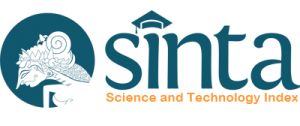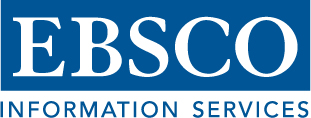Tren Pendidikan Teologi Di Dunia (Perspektif C&MA) “Quality Control”: Keunggulan Dalam Pendidikan Teologi
Abstract
Artikel ini membahas tentang tren-tren baru dalam pendidikan tinggi teologi di dunia hari ini dari perspektif C&MA. Pendidikan teologi telah mengalami perubahan, yang dulunya hanya dibatasi pada beberapa orang di abad ke-18 dan ke-19, sampai saat ini di mana pendidikan terbuka bagi orang-orang dari bermacam-macam latar belakang. Ada beberapa isu keunggulan yang harus dihadapi oleh sekolah-sekolah teologi. Pertama adalah keunggulan dalam kepemimpinan, termasuk menentukan masa depan sekolah dan memimpin dengan rendah hati serta menjadi teladan. Yang kedua adalah keunggulan dalam bahan akademis, termasuk kepentingan penerbitan, khususnya dari “Dunia Selatan”, kepentingan tren oralitas, dan tren mengenai kepentingan mahasiswa. Yang ketiga adalah keunggulan dalam administrasi. Isu ini membahas tentang kejujuran dan integritas dan usaha untuk masuk dalam dunia teknologi abad ke-21. Yang keempat adalah keunggulan dalam karakter atau formasi rohani. Jika sebuah sekolah memerhatikan keempat isu mengenai keunggulan ini, maka akan ada masa depan yang penuh pengharapan.
Kata-kata kunci: keunggulan, pendidikan teologi, kepemimpinan, formasi rohani, teladan, orality, adminstrasi, akademis, perspektif C&MA, sekolah tinggi, penerbitan
This article addressed recent trens in theological education in the world today from a C&MA perspective. Theological Education has changed over the many years, from being limited to a select few in the 18th and 19th centuries, to now be open to many different people from many backgrounds. There are areas of excellence that theological schools must address. These are, first of all, excellence in leadership. This includes shaping the future of the school and leading with humility and example. Secondly is excellence in the area of academics. This includes the importance of publishing, especially from the “Global South”, the important tren of orality, and the tren of “student-first” mentality. Thirdly is excellence in the area of administration. The speaks primarily to the area of honesty, integrity, and seeking to enter the technological world of the 21st century. Fourthly is excellence in the area of character, or spiritual formation. If a school attends to these four areas of excellence, the future will be promising.
Keywords: Excellence, theological education, leadership, spiritual formation, example, orality, administration, C&MA perspective, higher education, publishing
Keywords
Full Text:
PDF (Indonesian)References
Brake, Andrew. “Pengaruh Kepemimpinan dalam Pendidikan Teologi.” Dalam Utuslah Aku: Panggilan yang Tak Lekang oleh Waktu. Bandung: Kalam Hidup, 2012.
________________ Spiritual Formasi: Menjadi Serupa Dengan Kristus. Bandung: Kalam Hidup, 2014.
Chang, Samuel E. dan Grant Lovejoy, ed. Beyond Literate Models: Contextualizing Theological Education in Oral Contexts. Hong Kong: International Orality Network, 2013.
Lingenfelter, Sherwood G, Judith E. Lingenfelter. Teaching Cross-Culturally: An Incarnational Model for Learning and Teaching. Grand Rapids, Michigan: Baker, 2003.
Noll, Mark. A History of Christianity in the United States and Canada. Grand Rapids, Michigan: Eerdmans, 1992.
Tennent, Timothy C. Theology in the Context of World Christianity: How the Global Church is Influencing the Way we Think about and Discuss Theology. Grand Rapids, Michigan: Zondervan, 2007.
Tienou, Tite. “Christian Theology in an Era of World Christianity,” dalam Craig Ott dan Harold Netland, ed., Globalizing Theology: Belief and Practice in an Era of World Christianity. Grand Rapids, Michigan: Baker, 2006.
Wu, Jackon. “How Would Jesus Tell it? Crafting Stories from an Honor-Shame Perspective.” Evangelical Missions Quarterly Vol. 51, No. 1. (January 2015).
DOI: http://dx.doi.org/10.25278/jj71.v13i1.103
viewed = 0 times


















